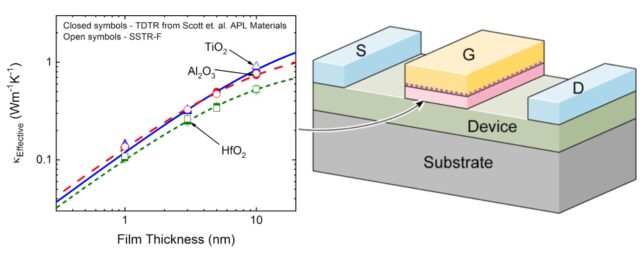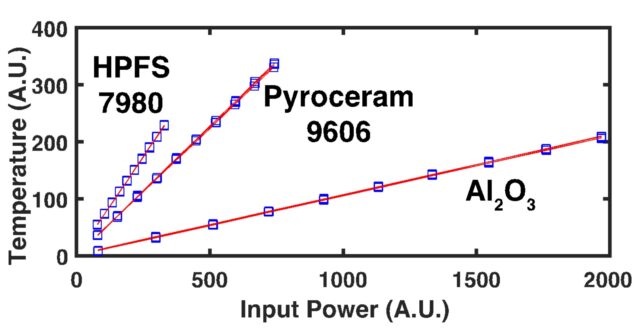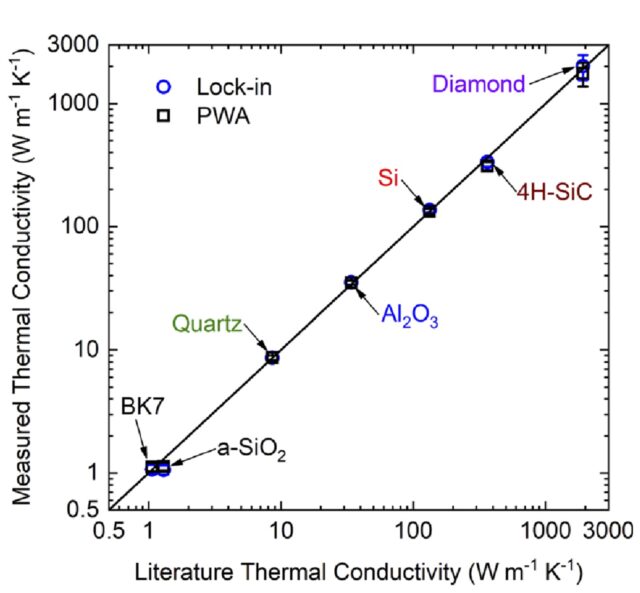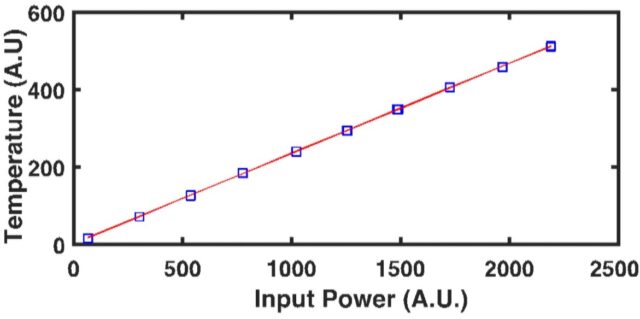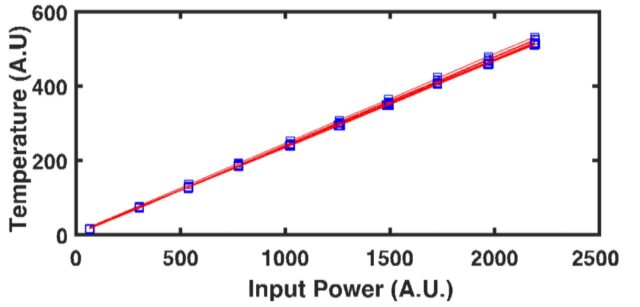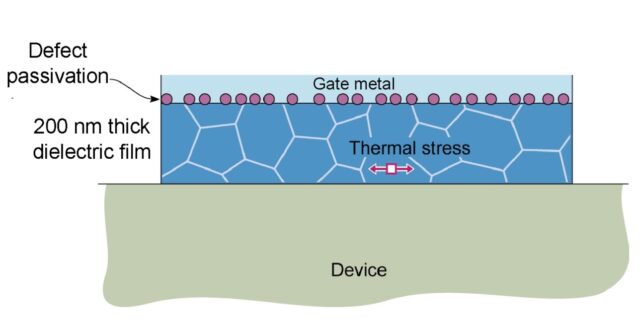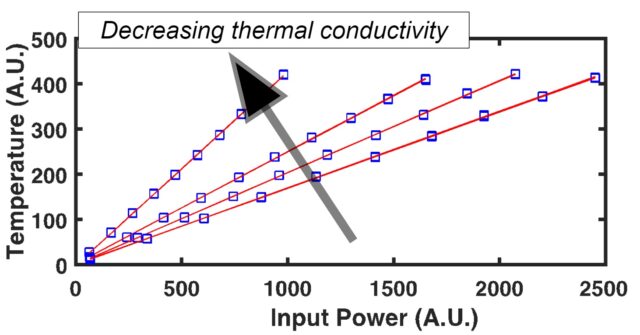Semiconductor devices often operate under sustained thermal stresses. Understanding the thermal resistances of the materials used in these devices is essential to mitigate thermal failure and maximize performance, reliability, and manufacturing yield. Accurately measuring the thermal resistances of semiconductor materials such as nanoscale thin films, however, is a substantial metrology challenge.
In this blog, we explore thermal failure in semiconductor devices and why measuring thermal resistance is the key to predicting and defining their operating limits and using them to generate accurate specifications and design adequate cooling systems.
We conclude with a look at how a new thermal testing method, Steady-State Thermoreflectance in Fiber Optics (SSTR-F), offers semiconductor manufacturers a precise, high-throughput technique for measuring thermal resistance in even the most challenging materials at nanometer length scales.

What is thermal failure? Thermal Failure Meaning
Thermal failure refers to the failure of a component due to thermal stresses that arise from cyclical temperature fluctuations, shocks, or prolonged exposure to high temperatures. These stresses can accelerate a number of different physical and chemical risk factors (in semiconductor components, these include internal corrosion, thermal runaway, and metallic growth stemming from ion migration), driving premature failure and/or devices performing below intended specifications.
Mitigating thermal failure is particularly important in semiconductor components, which inherently generate heat, resulting in operation under sustained thermal stresses. These components can experience excessive thermal stress due to electrical overstress, defined as exposure to greater than the components’ rated current or voltage. Electrostatic discharges are another potential driver of thermal overstress in semiconductor devices.
To limit failures and accurately assess the reliability of components, semiconductor manufacturers institute rigorous procedures to test for thermal resistances. Thermal testing is important to screen out components prone to premature failure. Potential modes of failure include:
- Defective wire bonds
- Oxide-layer faults
- Metallization defects
- Die-substrate attachment issues
- Seal failures
- Cracks or other defects in the die material itself
- Different materials with mismatched thermal expansion coefficients
- Packaging defects
For example, accelerated temperature cycling (typically 500 to 1000 periods of alternating high/low temperature) can help weed out defective components and generate estimates of a device’s expected lifetime and thermal operating limits. Additional types of “Environmental Stress Screening” can include thermal shock, high-temperature burn-in testing, and vibration testing. After each stress test, electronic parameters are measured to ensure that the device is still working as designed. We take a deeper look at semiconductor testing and how it works in our blog here.
While stress screening can help establish operating limits and filter out defective devices, it does not generate precise data on how a component can dissipate heat from electrical loads. Doing so requires measuring crucial properties such as thermal resistances, but measuring these properties in nanoscale materials, such as the thin films used in semiconductor devices, is a substantial metrology challenge requiring specialized equipment.
Why Precisely Measuring Thermal Resistance is Essential for Limiting Thermal Failure in Semiconductor Components
Thermal resistance is a basic thermal property that measures the steady-state temperature differential between two surfaces for a given level of power dissipation. It is typically expressed in terms of K/W, or, more generally for any given area of a component, m2 K/W. It can be formally defined as:
R = ΔT/Q
where ΔT is the temperature difference and Q is the power flux dissipated by the heated component. Thermal resistance is the reciprocal of thermal conductance and can be directly related to thermal conductivity via Fourier’s Law—we take a deeper look at conductivity and the fundamentals of heat transfer in our blog here.
Thermal resistance is commonly analogized to electrical circuits with temperature compared to voltage, thermal resistance to electrical resistance, and power dissipated to electrical current. In a semiconductor device, heat flows through a series of different materials and across a variety of interfaces, traveling from transistors and integrated circuits, to package, to heatsink (if present), to the ambient surroundings, and across every interfacial region along the way. Each of these points exhibits its own level of thermal resistance that contributes to the maximum temperature at a hot spot. These resistances sum to a total thermal resistance from chip to ambient. Semiconductor manufacturers seek to minimize the thermal resistance at each of these points, allowing heat to flow out of the device as efficiently as possible.
Accurately measuring the thermal resistances of the thin films used in many semiconductor devices is essential for eliminating deleterious temperature rises, understanding operating limits, and designing adequate cooling systems capable of maintaining performance (which may mean relying on convection cooling or implementing solutions such as heatsinks, fans, and ventilation) while avoiding both thermal failure and costly over-specification.
Generating precise measurements of the thermal resistance of these thin film materials, however, is a substantial metrology challenge. Traditional testing methodologies require physical testing probes, limiting throughput. Traditional approaches also lack the ability to provide precise, reliable, and repeatable measurements on the length scales needed for semiconductor materials like sub-micrometer scale thin films.
With substantial margins for error on traditional thin film thermal resistance measurements, semiconductor manufacturers have traditionally resorted to derating (operating a device at less than its maximum rated power dissipation) to establish an additional margin of safety. Consequently, more accurate, precise thermal resistance measurements can directly enable semiconductor device designs that are higher performance, more reliable, and more predictable.
Laser Thermal’s patented Steady-State Thermoreflectance in Fiber Optics (SSTR-F) method provides a novel alternative to traditional measurement techniques that directly addresses their most important limitations.
Using SSTR-F to Improve Thermal Resistance Measurements and Help Prevent Thermal Failure in Semiconductor Devices
In short, SSTR-F is a non-contact laser-based pump-probe technique, fully capable of measuring the thermal conductivity and interfacial thermal resistance of thin films. This turnkey solution allows for fully automated, high-throughput measurements ideal for screening large volumes of semiconductor materials. In addition to its non-contact and high throughput capabilities, SSTR-F provides accurate (+/- 10 %), repeatable (+/- 0.5 %) and reproducible (+/- 1.0 %) results, offering the ideal solution to identify defects and prevent unplanned thermal failures.
If you’re interested in learning more about SSTR-F, how it works, and how it can help provide more precise thermal resistance measurements for challenging semiconductor materials, we recommend starting with our video playlist here.



